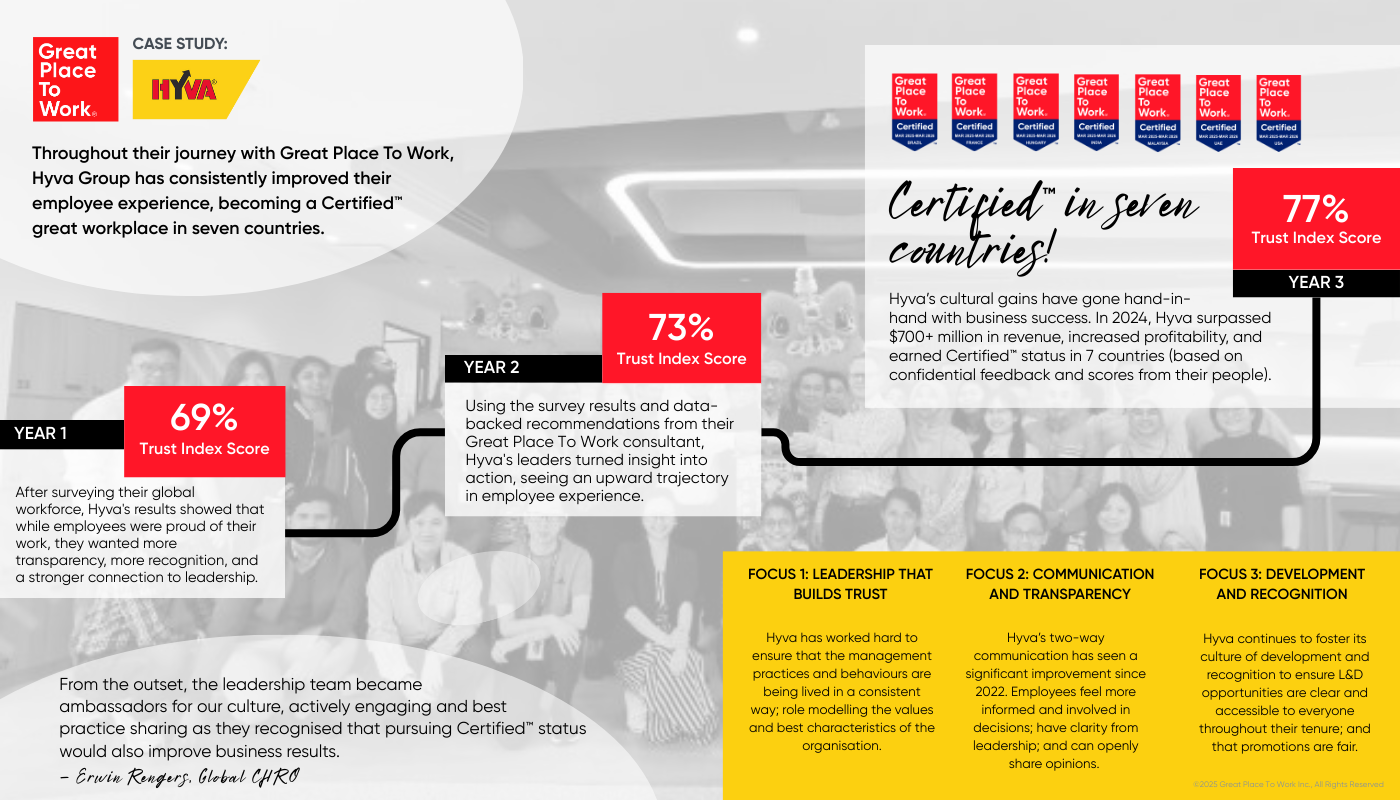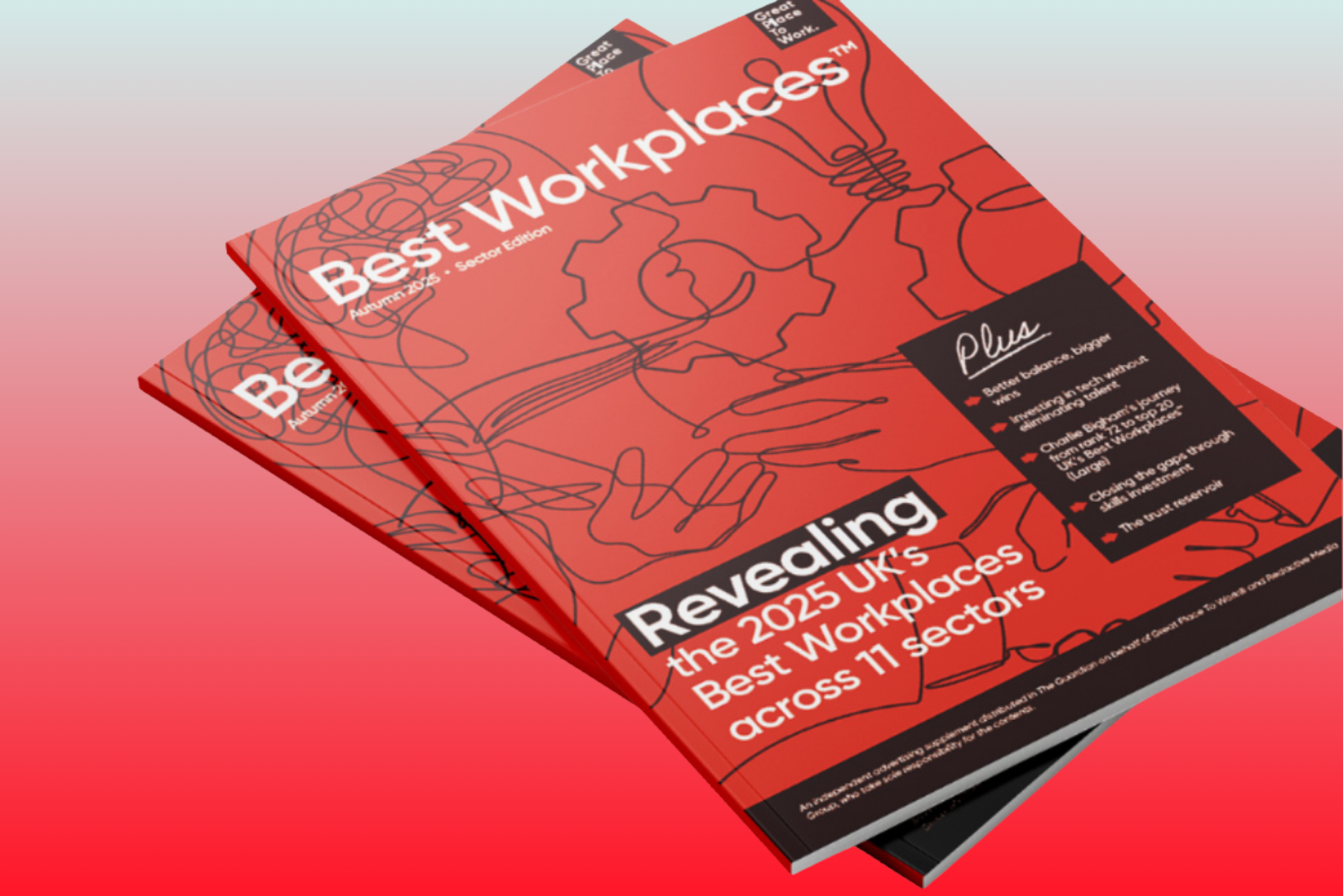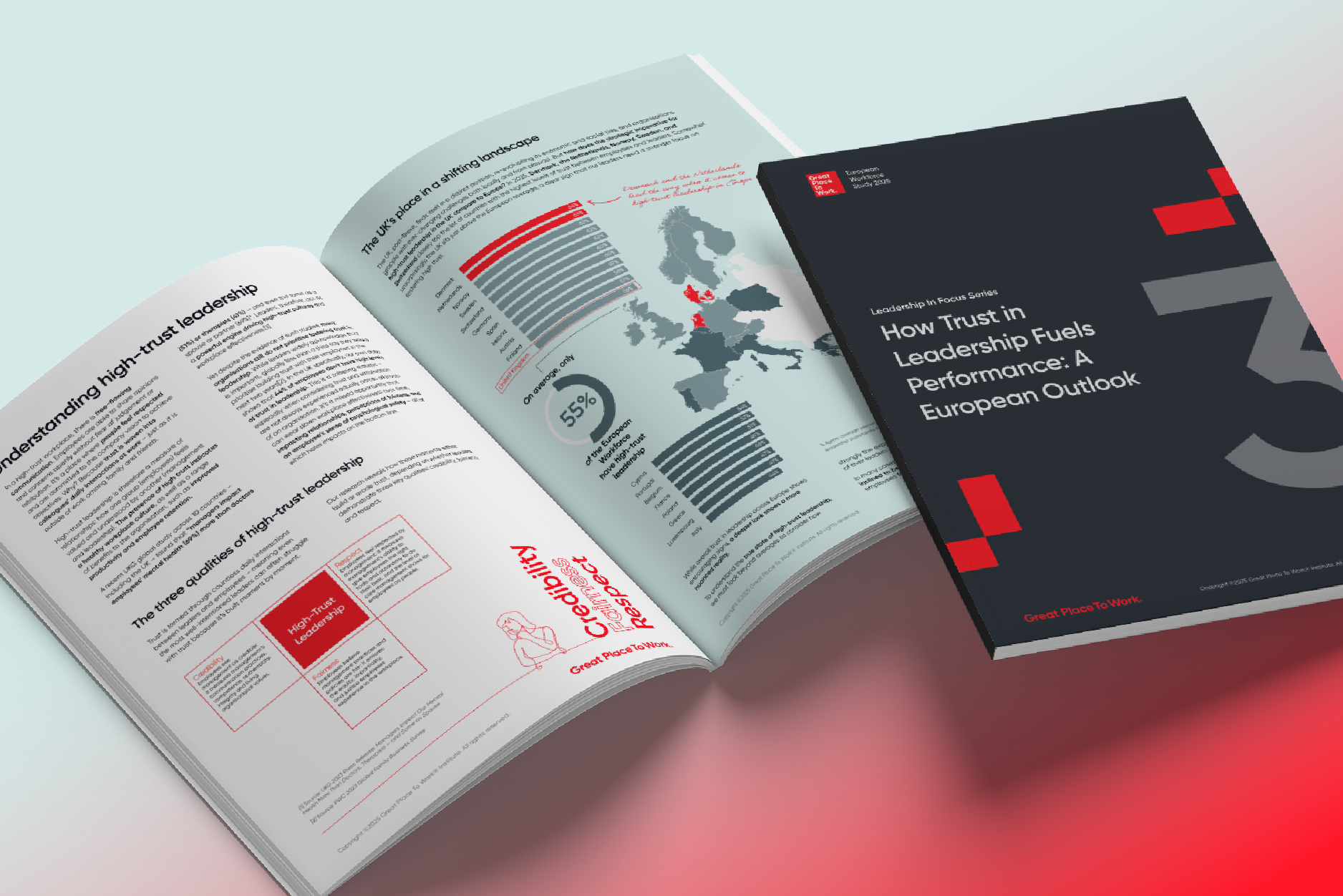Recent analysis by Johns Hopkins University and Great Place To Work reveals a troubling decline in employee wellbeing across the UK. Under‑35s, frontline managers and men have been hit hardest.
With wellbeing levels slipping for these key demographics, it remains more important than ever for organisations to address the root causes and ensure they are supporting all their people to thrive.
After all, organisations with high wellbeing scores significantly outperform peers in retention, innovation, and financial returns.
Economist Alex Edmans’ analysis of data from 2001-2023 found that
UK’s Best Workplace organisations – where employees have consistently high levels of employee wellbeing and employee satisfaction – perform more than four times better than the FTSE All-Share Index.
“The data is clear: employee wellbeing goes hand in hand with business performance,” says Sara Silvonen, co-author of the report Fostering Wellbeing at Work in the UK and wellbeing lead at Great Place To Work UK. “When wellbeing suffers, so does productivity, trust, and retention. People leaders are uniquely positioned to drive positive change, using this report as a roadmap for building resilient, high-trust cultures where both people and business performance thrive.”
So, how can leaders ensure they are fostering employee wellbeing for all?
3 steps for fostering employee wellbeing for all
1. Create a strategic priority from the top
As with most organisational changes, a focus on wellbeing starts from the top. Organisational leaders must buy into, and fully recognise the value in, treating wellbeing as a strategic business priority that directly impacts the bottom line. Many leaders may have other priorities given the changing geopolitical environment and potential disruption related to AI. Yet building a solid organisation that can adapt to changes starts with a strong focus on day-to-day employee wellbeing.
2. Listen continuously to understand experiences
and challenges
Not all leaders get top-down communication right, but even fewer perfect the art of listening. The timings, channels, and frequency of information gathering vary with unique organisational needs, but employees should have multiple opportunities to have their voices, experiences, challenges, and ideas heard. This generally splits into more formal written feedback through pulse surveys, along with regular, informal feedback through one-to-ones or other more proximal methods.
3. Involve employees in co-creating solutions
Listening doesn’t stop after experiences and issues have been shared – commonly the best solutions to these challenges exist at the frontline, best heard straight from the horse’s mouth. When employees feel they have been actively involved in action-planning and the design of new initiatives, these efforts are far more likely to be embraced, making them more cost-effective.
Download the full report for more steps to fostering employee wellbeing for all. Get your copy here.
.png?width=636&height=212&name=Email%20CTAs%20(27).png)








